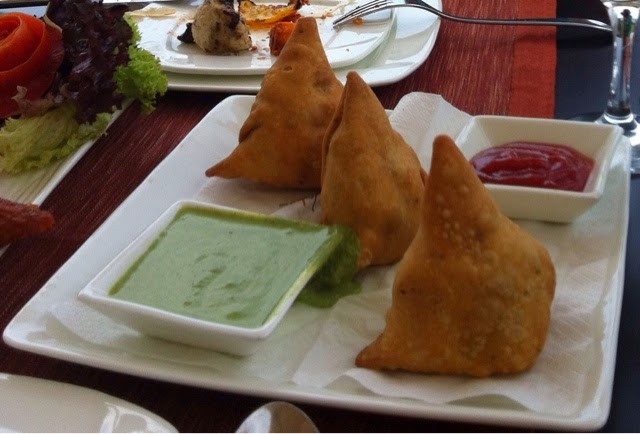Moti Mahal: Luxurious Indian Cuisine In Our Own Backyard
I’ve been meaning to write a thoughtful review about Moti Mahal, and after at least a half dozen visits to the Zaitunay Bay outlet, it was sorely overdue to say the least. Indian cuisine is hard to come by in Lebanon. El Hindi at Palm Beach Hotel and Jaipur at the Monrovia are decent dining options, but they pale in comparison to Moti Mahal’s traditional cooking methods, flavors, and restaurant feel in general.
Established in Delhi, India, in 1947, Moti Mahal eventually became a destination for world leaders and tourists because of its luxurious Mughlai food. The restaurant was the first to introduce the world to the classic clay tandoor, dating back to the early 1920s, as well as its signature dish, butter chicken.
When I was living in Boston and Paris, I sampled South Indian cuisine at modest eateries, but the food on offer was humble and heartburn-inducing. Stews would be brimming with every spice in the book; meats were strewn with skin and bones; and the impression you’d form of the cuisine was a frenzied hodgepodge of fried vegetables, lamb morsels, and greasy chicken. While the taste seemed exotic to my palate, my poor stomach would fight to digest what I’d consumed, and the food would sit heavily for at least a day before I could eat again.
Moti Mahal redefines sophisticated Indian cuisine, and its food is not only remarkably pleasant and delicious, it is a feast for the eyes! Let’s start with the generous pyramid-shaped samosas, stuffed liberally with turmeric-tinged potatoes, peas, carrots, cashews, sultanas, and cumin seeds. I’m not sure why the restaurant serves them with ketchup, but don’t you dare dip into it and mar the chef’s masterpiece.
The daal makhani, a home-churned buttery porridge derived from black lentil seeds, is prepared slowly on low heat, and you could happily call it a meal if you accompany it with a fresh loaf of tandoori naan bread.
A word on the naan: the bottom side is crisped to a crunchy golden brown, while the upper side forms bubbles of warm air pockets and soaks up any gravy marvelously.
The palak paneer marries heart-warming creamed spinach with rectangular prisms of roasted Indian cottage cheese (paneer). It too can suffice with warm naan to scoop it up.
The tandoori grills, most of which are served boneless and skinless, are easily the star of the culinary show. There are a variety of marinades and savors whose names and titles I won’t pretend to recall here, but I will attempt a description. Murg malai tikka is tinted orange-red thanks to cayenne and other hot peppers. Order a lassi (ayran drink that comes either plain or flavored) to subdue the intensity. There is another tandoori chicken bathed in yogurt and mint and thus green in hue. Though it is mild in heat, it is rich in flavor. The white chicken allows you to appreciate the aromas infused by the tandoor because there are hardly any spices masking it.

The seekh kabab is the Indian counterpart to our Lebanese kabab, reproducing the same style of loosely-ground meat which melts softly on the tongue. Contrary to its ruddy color, it is not spicy.
Prepare to be windswept with the tandoori vegetarian platter, a bouquet of shades, flavors, and textures. A massive square dish emerges chockfull of piquant mushroom caps; cored potato stuffed with vegetables and spices; grilled paneer; bell peppers and onions; and, my favorite, broccoli flowerets basked in crème fraiche and baked in the tandoor. Herbivores and carnivores alike will become enamored with this sampler.

I doubt you’ll care for dessert after the parade of savory dishes, but if you must, opt for the kesari kulfi. This is India’s take on ice cream, a lightly-sweetened whole milk concoction infused with pistachio and cardamom. It will refresh and soothe rather than induce a sugar coma.
At Moti Mahal, upscale Indian cuisine is the name of the game, and if you’re looking for a pampering fine-dining experience with flavors running the entire heat index, this is your certain paradise. I recommend securing a table inside on your first foray here, as you will delight in watching the Indian chefs work their magic from behind the glass panel.





This looks amazing!
ReplyDelete